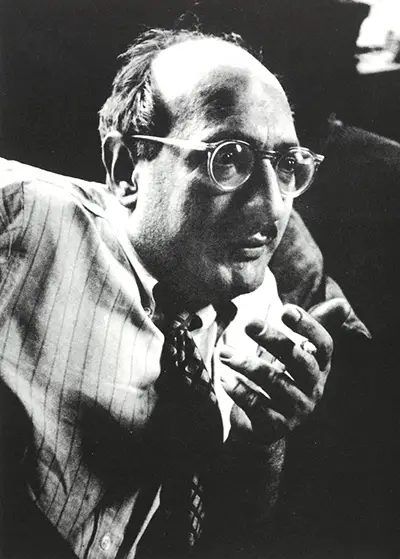Famous Quotes by Mark Rothko
And last, it may be worthwhile trying to hang something beyond the partial wall because some of the pictures do very well in a confined space.
A painting is not about an experience. It is an experience.
Art is an adventure into an unknown world, which can be explored only by those willing to take risks.
Art to me is an anecdote of the spirit, and the only means of making concrete the purpose of its varied quickness and stillness.
I also hang the pictures low rather than high, and particularly in the case of the largest ones, often as close to the floor as is feasible, for that is the way they are painted.
I don't express myself in my paintings. I express my not-self.
If our titles recall the known myths of antiquity, we have used them again because they are the eternal symbols upon which we must fall back to express basic psychological ideas.
If you... are moved only by the color relationships, then you miss the point.
I'm interested only in expressing basic human emotions. And the fact that a lot of people break down and cry when confronted with my pictures shows that I can communicate these basic human emotions.
I'm not an abstractionist... I'm not interested in relationships of colour or form or anything else.
It is a widely accepted notion among painters that it does not matter what one paints as long as it is well painted. This is the essence of academicism.
It is our function as artists to make the spectator see the world our way – not his way.
Look, it's my misery that I have to paint this kind of painting, it's your misery that you have to love it, and the price of the misery is thirteen hundred and fifty dollars.
Pictures must be miraculous: the instant one is completed, the intimacy between the creation and the creator is ended.
Red, yellow, orange-aren’t those the colors of an inferno?
Silence is so accurate.
That is why we profess a spiritual kinship with primitive and archaic art.
The picture must be... a revelation, an unexpected and unprecedented resolution of an eternally familiar need.
The reason for my painting large canvases is that I want to be intimate and human. To paint a small picture is to place yourself outside your experience, to look upon an experience as a stereopticon view or with a reducing glass. However you paint the larger picture, you are in it. It isn't something you command.
There is no such thing as good painting about nothing.
This world of the imagination is fancy-free and violently opposed to common sense.
This would be a distortion of their meaning, since the pictures are intimate and intense, and are the opposite of what is decorative; and have been painted in a scale of normal living rather than an institutional scale.
We assert that the subject is crucial and only that subject matter is valid which is tragic and timeless.
Quotes about Mark Rothko by Art Historians and Fellow Artists
One of the preeminent artists of his generation, Mark Rothko is closely identified with the New York school, a circle of painters that emerged during the 1940s as a new collective voice in American art. During a career that spanned five decades, he created a new and impassioned form of abstract painting.
National Gallery of Art
Highly informed by Nietzsche, Greek mythology, and his Russian-Jewish heritage, Rothko's art was profoundly imbued with emotional content that he articulated through a range of styles that evolved from figurative to abstract. Rothko's early figurative work - including landscapes, still lifes, figure studies, and portraits - demonstrated an ability to blend Expressionism and Surrealism. His search for new forms of expression led to his Color Field paintings, which employed shimmering color to convey a sense of spirituality.
TheArtStory.org
Although Rothko lived modestly for much of his life, the resale value of his paintings grew tremendously in the decades following his suicide in 1970.
Wikipedia
In 1979 a new board of the Mark Rothko Foundation was established, and all the works in the estate were divided between the artist’s two children and the Foundation. In 1984 the Foundation’s share of works was distributed to 19 museums in the United States, Great Britain, the Netherlands, Denmark, and Israel; the best and the largest proportion went to the National Gallery of Art, Washington, D.C.
Britannica.com
By 1949 Rothko had introduced a compositional format that he would continue to develop throughout his career. Composed of several vertically aligned rectangular forms set within a colored field, Rothko's "image" lent itself to a remarkable diversity of appearances. In these works, large scale, open structure, and thin layers of color combine to convey the impression of a shallow pictorial space. Color, for which Rothko's work is perhaps most celebrated, here attains an unprecedented luminosity.
National Gallery of Art

